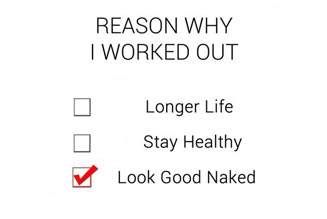MYTH OF THE FAT BURNING ZONE
One endlessly pervasive myth that never seems to die is that you should exercise in the fat burning zone for maximal fat loss.
Exercising in the fat burning zone is described as an ideal intensity of 40 to 60 percent of your heart rate where your body utilizes the most fat for fuel. During exercise, the body fuels itself from stored glycogen (carbs stored in the muscle and the liver) and stored fat. Many people believe that exercising at a high intensity will burn more carbs instead of fat and therefore the intensity should be lowered to target fat specifically (the fat burning zone).
In his book Burn the Fat Feed the Muscle, Tom Venuto points out that people get confused between the TYPE of fuel burned verses the AMOUNT of fuel burned. Exercising at low intensity levels will burn more fat than sugar (carbs), but it will also burn less calories overall. If you keep exercising at a lower intensity, you will keep on burning fewer calories. When we exercise, our bodies end up burning a combination of carbs and fat, and NOT an isolation of one or the other. When you exercise at higher intensities, you end up burning more calories and therefore will burn MORE fat than if you exercised at a lower intensity.

At the end of the day, fat loss is a matter of energy in verses energy out, meaning you want to maximize your caloric expenditure. High intensity exercise simply burns more calories.
Real world results can also dictate what works best. When I trained for my competition, I reached the leanest I’ve ever been by doing high intensity cardio. Walking on a treadmill or doing exercise at a slow pace wouldn’t have done very much for me.
Most people who have achieved extreme leanness will tell you they didn’t reach their goal by doing slow exercise - unless of course they have superior genes, not because they exercised in the fat burning zone.
I will end this with a quote by New York based fitness expert Marc Perry, “The fat burning zone is one of the most pervasive myths in the fitness industry that just won’t go away.”
Click here to learn more about high intensity interval training.

 MAYA’S BIOGRAPHY
MAYA’S BIOGRAPHY DIET & EXERCISE PLANS
DIET & EXERCISE PLANS